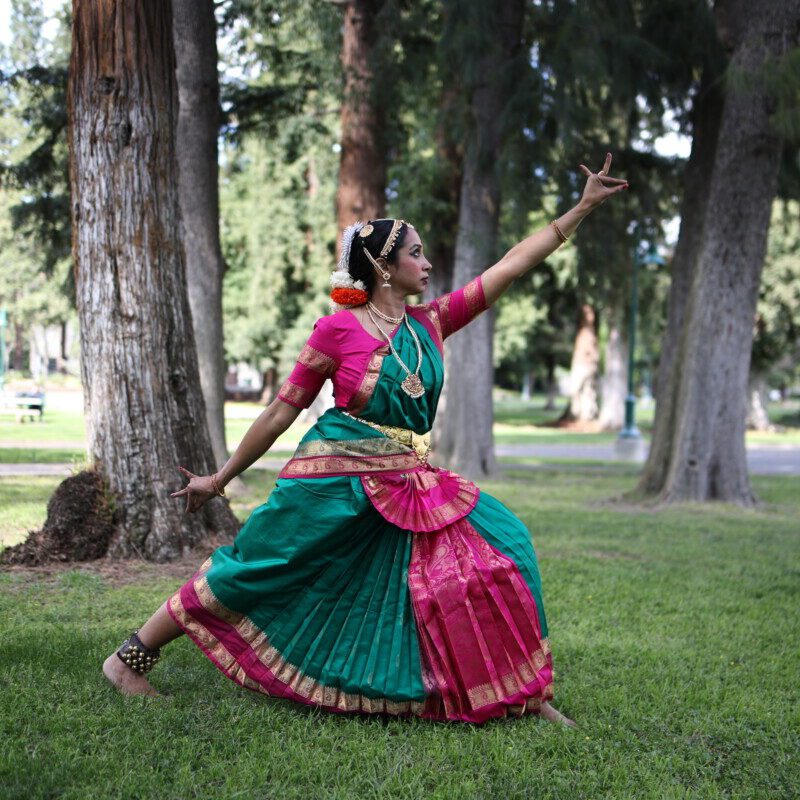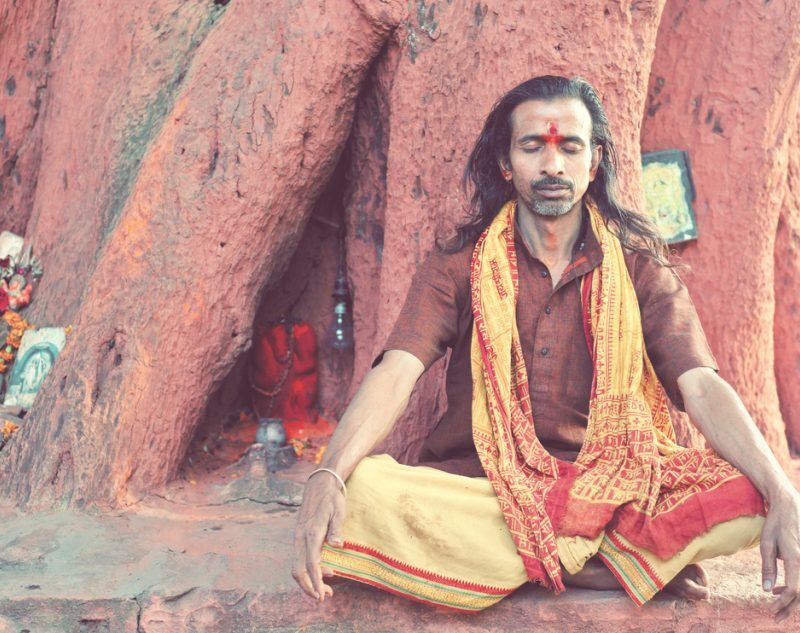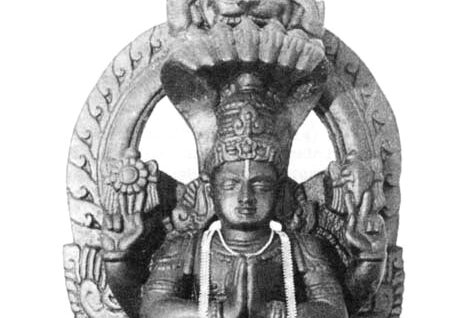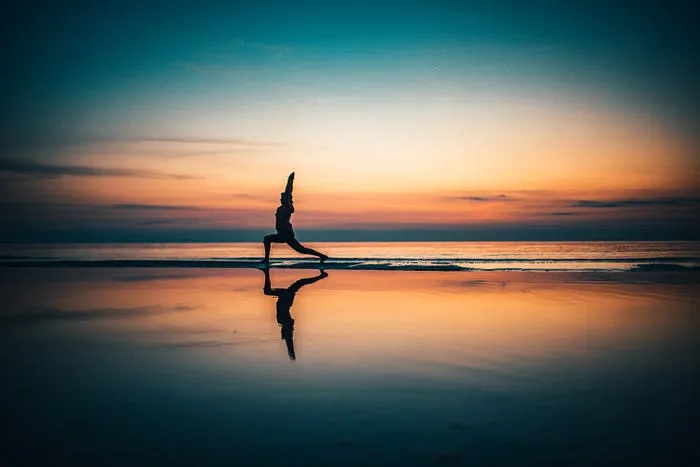

Happy International Yoga Day! Any day is good enough to write/share about yoga but it definitely feels special to write about it on a day like today, when the entire world celebrates it.
Yoga’s root word in Sanskrit is “yuj” or “ to yoke” or “ to unify” — to unify with the Supreme, the Creator. And hence for such a gargantuan goal, yoga helps prepare the body, mind, and soul to be fit and focused.
To my grandparents, yoga was essentially devotion.
When I immigrated to the States decades ago, I experienced yoga as “asanas,” “yoga pants,” “ synthetic yoga mats,” and “ yoga studios.” Immigrant Indian Americans like me, grew up watching our families practice yoga long before it became a fad in the West.
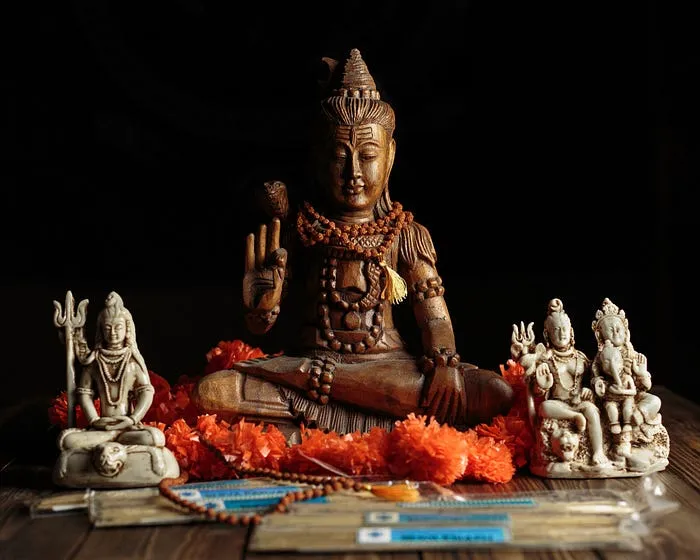
However, back home in Tamil Nadu, Southern India, where I grew up in a traditional joint family along with my grandparents, yoga was a lifestyle, a set of values and mindsets based on Hinduism, which included asanas, or postures, but was not limited to it.
To my grandparents, yoga was essentially devotion.
My grandparents would do their pranayam first thing in the morning on an empty stomach to harness the power of the breath, followed by a shower. Next, they would convert their dhotis/veshti/saris (thin, six or nine yards of cotton fabric wrapped around the body as everyday wear) into make-shift pants by taking their garments between their legs and tucking them in their backs. Finally, they would pull out a jute mat and practice the asanas/postures.
But before they even did their first Surya Namaskar or Sun Salutation, they would invocate Sage Patanjali—the father of yoga who originally composed the Yoga Sutras. With their eyes closed and hands folded in a namaste before their chest, they would recite the Yogena Chittasyaa chants in Sanskrit.
योगेन चित्तस्य पदेन वाचां ।
I praise sage Patanjali, who gave us the science of yoga to purify our mind and consciousness. And who gave us grammar and vocabulary to use the words and express ourselves with perfection.
मलं शरीरस्य च वैद्यकेन ॥
He gave us the gift of medicine, i.e. ayurveda, so that we remove the body’s impurities.
योऽपाकरोत्तमं प्रवरं मुनीनां ।
Dear Lord, let me be closer to the sage who gave us all these gifts.
पतञ्जलिं प्राञ्जलिरानतोऽस्मि ||
I bow down with folded hands in reverence of Lord Patanjali.
Doing the asanas was a quiet, discreet part of their everyday life.
The asanas and pranayama were just the beginning.
My grandparents would also make a sincere attempt to practice the other six important aspects of yoga :
NIYAMA: Positive duties or observances
PRATYAHARA: Sense withdrawal
DHARANA: Focused Concentration
DHYANA: Meditative Absorption
SAMADHI: Bliss or Enlightenment
To practice the above, they did regular fasting, daily worship, and reading our holy scriptures like the Vedas, Upanishads, and Gita. In doing so, they also practiced the four types of yoga described in the Bhagavad Gita, the holy texts of the Hindus.
BHAKTI YOGA: path of devotion
RAJA YOGA: path of meditation
KARMA YOGA: Path of right action
JNANA YOGA: Path of knowledge
Source:https://www.yoga.day/
My thatha (maternal grandfather) had a beautiful huge poster of the different asanas in his room in our gorgeous, ancient ancestral home in the present-day city of Chennai. He could do inverted poses like Sarvangasana and Shirasasana like a pro. His sadhana (spiritual practice) was undeterred by his surroundings.
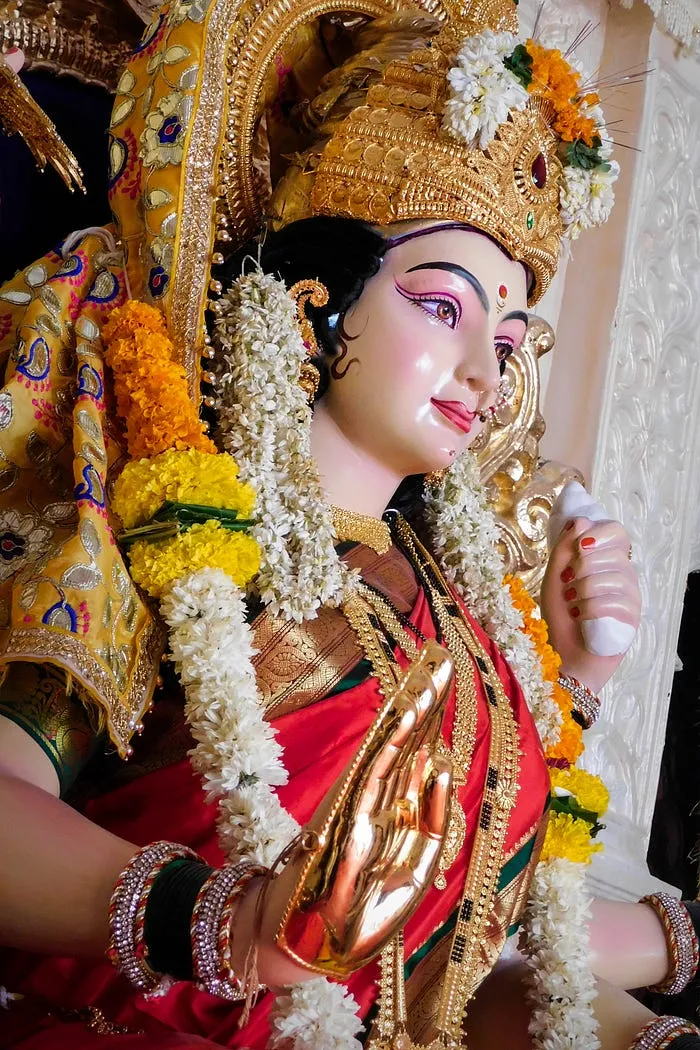
He would also recite the Durga Saptashati or Devi Mahatmyam in the famous Kalikambal temple in Chennai’s Parry’s corner sitting comfortably in Padmasana for three hours. This temple dedicated to Goddess Durga or Shakti was famous amongst the Maratha kings. So much so that Chhatrapati Shivaji Maharaj, one of the most valiant Hindu kings who arrested the brutal Mughal invasion in India, visited the temple in the 16th century, and venerated the Goddess.
Summer vacations in Chennai
Every summer vacation in Chennai included visiting the Kalikambal temple and watching my thatha perform his bhakti yoga.
During our visits, thatha would also make us do the asanas daily. We did everyday meditation and seva/ service, including drawing water from the house well and taking care of our “assigned” plants in his massive backyard that grew indigenous plants like tulsi/holy basil, mango, moringa, and bananas.
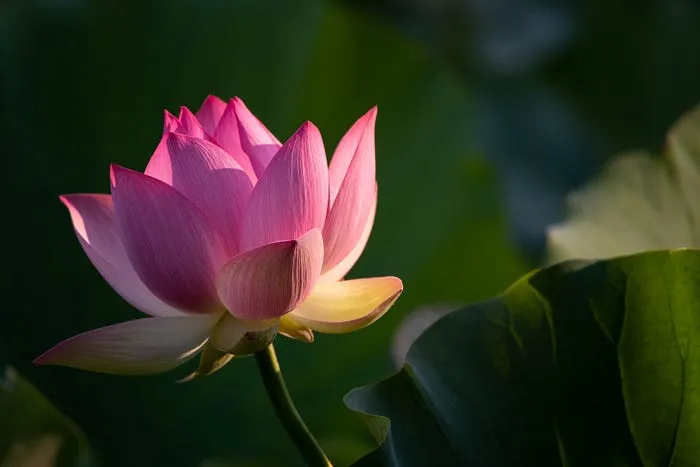
We also had a daily chore of harvesting beautiful indigenous flowers from his vast flower garden for the puja- flowers like mallis (night jasmine, crepe jasmine and arabian jasmine), cemparutti (hibiscus), arali (oleander), champa (frangipani), kanakambaram (crossandra) and roses. We even had a beautiful tiny taamarai (lotus garden). The taamarai is the queen of Indian flowers, the seat of Saraswati (Goddess of Learning), and holds a special place in our hearts! So naturally, the taamarais were assigned only for extremely auspicious special days.
Evenings would include learning new shlokas or divine chants, some satsang / discussion of good thoughts, and a constant reminder to watch our speech and action, directing it towards truth, compassion, and positivity.
My paati (maternal grandmother) often reminded us never to say “ellai (no).” Invisible angels abound in the air proclaiming “Thathaastu,” meaning “ So be it.” Paati’s reminders were an early invaluable lesson in the power of positive speech and manifesting the outer world according to our inner realities. I learned from a young age that we truly are the architects of our own lives starting with our vaani/ speech directing us towards better or worse realities.
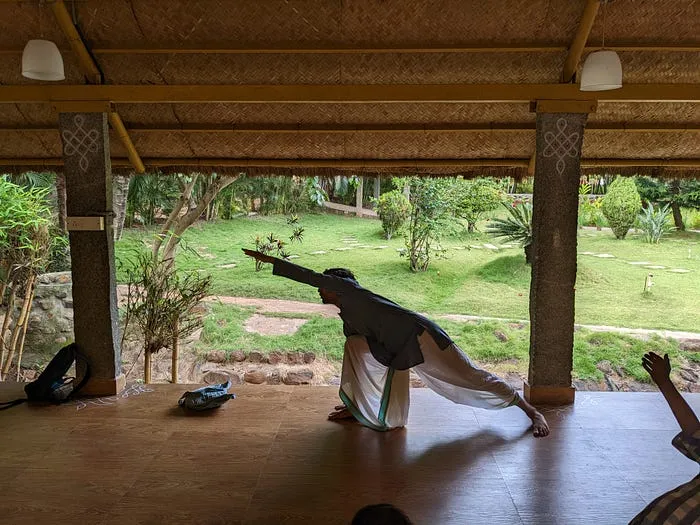
Yoga teacher performing yoga asana in Southern India. Photo by Sangeetha Shankar.
All of the above and much more constitute yoga to us, the indigenous practitioners. I got to experience a sliver of my grandparents’ yoga sadhana, while visiting Mysuru, Karnataka, Southern India, last year. We were attending a traditional summer camp on the banks of the river Cauvery on a beautiful campus. The camp was hosted by Agastya Gurukulam, where my children learned Sanskrit through online classes every day.
Yoga teachers from a nearby traditional school came by and taught us every day. Interestingly there was no hue and cry, no celebration, and no big deal on International Yoga Day! It was business or rather “yoga” as usual for them. They taught us the asanas in their usual attire of a dhoti and highlighted the important aspects of yoga.
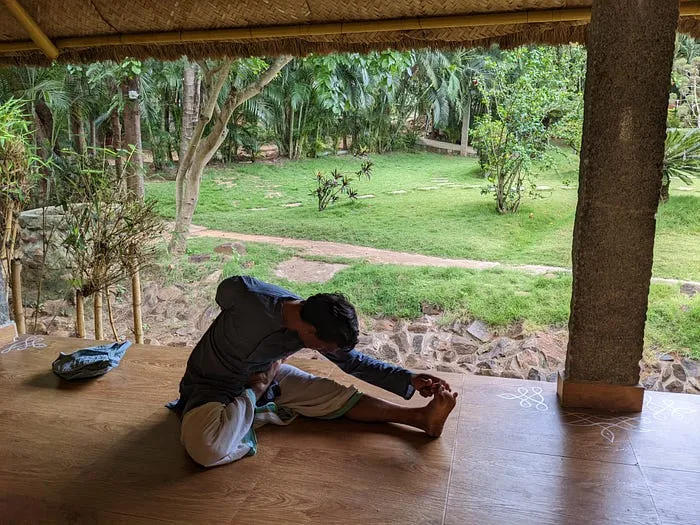
Yoga teacher performing yoga asana – Photo by Sangeetha Shankar
We learned that asana means “seat.” Can one sit in an asana while practicing meditation? Can you be comfortable enough to be in an asana for three hours? Yes, three hours! Imagine that? Till then, you cannot claim to have mastered an asana!
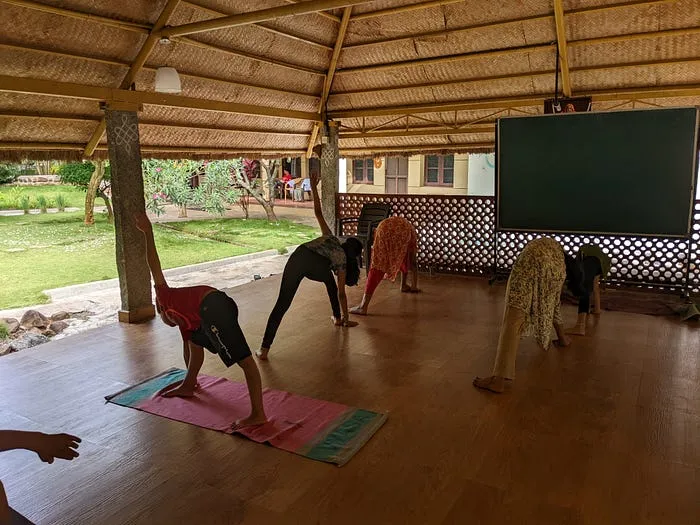
Children learning yoga asana during summer camp. Photo by Sangeetha Shankar.
When teaching the asanas, the teacher would introduce one at a time. The student would perform the same asana for three weeks and be put on observation. What does the asana do to him/her/they? What are the daily psychological, physical, and emotional effects on the individual? Does it suit the prakriti/ nature of the practitioner? At the end of the three weeks, the teacher would decide if the asana was suitable for the individual or not.
Nope, not everybody did every asana. It was a highly individualized practice.
Yoga in the U.S.
Fast forward to the US, where yoga is now a billion-dollar industry. As an indigenous practitioner, it’s heartening to see yoga adopted by so many here. But to see it being restricted to only postures and breathing is also disappointing. Yoga is not just back-bending postures. Nor does yoga involve beer, guns, or goats. It is a way of life.
So if you want to celebrate International Yoga Day, take some time out and learn about the tradition, the spirituality, and the history of yoga.
The Hindu American Foundation has done invaluable work in re-affirming yoga’s Hindu roots.
Talk to your Indian-origin friends who practice it in the original form, and also take the time to learn the original Sanskrit names of the asanas. NO dog and cow pose, ok? We can do better than that in this day and age of Duolingo, AI, and the gazillion language apps!
We can, can’t we?
Happy International Yoga Day once again!


